Environmental Geoinformatics Laboratory
Fieldwork
Fieldwork
Exploring the environment for hidden information

Our fieldwork is typically conducted in aquatic environments in order to sample the ocean floor or the lake floor, typically by sediment coring or other drilling techniques. When targeting soft sediments, our goal is often to obtain a continuous record of past environmental change. We also target fossil coral reefs to understand the history of sea-level change and collect water samples for measuring radiocarbon to better understand circulation patterns.
Over the years, we have used a variety of platforms for fieldwork, including the JOIDIES Resolution (USA), The Hakuho Maru (Japan), and the Sonne (Germany), as well as a number of smaller vessels and stationary platforms. Members participate in scientific ocean drilling, including the current International Ocean Discovery Program (IODP), as well as the previous Integrated Ocean Drilling and Ocean Drilling Program (ODP).
The sedimentary material allows us to study a variety of phenomena, from the origin of abrupt climate change in the geological past and ice-sheet dynamics to the history of volcanic eruptions and earthquake-related tsunamis.
Research with Field Components
Cruise KS-25-10 (R/V Shinsei Maru), Aomori - Hakodate (August, 2025)
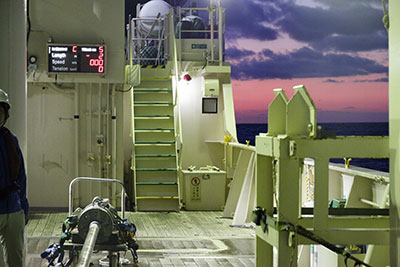 Elucidating the impacts of the winter monsoon and theTsushima Warm Current on the formation of Japan Sea Proper Water and its ecosystem.
Elucidating the impacts of the winter monsoon and theTsushima Warm Current on the formation of Japan Sea Proper Water and its ecosystem.
Cruise KH-23-11 (R/V Hakuho Maru), Okinawa - Tokyo (December, 2023 - January, 2024)
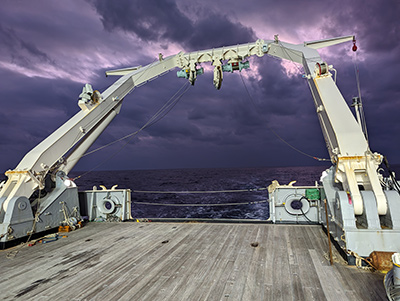 This cruise was conducted in the Southern Okinawa Trough, which is a back-arc basin undergoin intermittant rifting. The primary objective of the cruise was to understand the processes ongoing during early stages of continental rifting. This cruise also provided us an opportunity to take more samples for our Kuroshio research.
This cruise was conducted in the Southern Okinawa Trough, which is a back-arc basin undergoin intermittant rifting. The primary objective of the cruise was to understand the processes ongoing during early stages of continental rifting. This cruise also provided us an opportunity to take more samples for our Kuroshio research.
Cruise KS-22-4 (R/V Shinsei Maru), Yokosuka - Okinawa - Kagoshima (April, 2022)
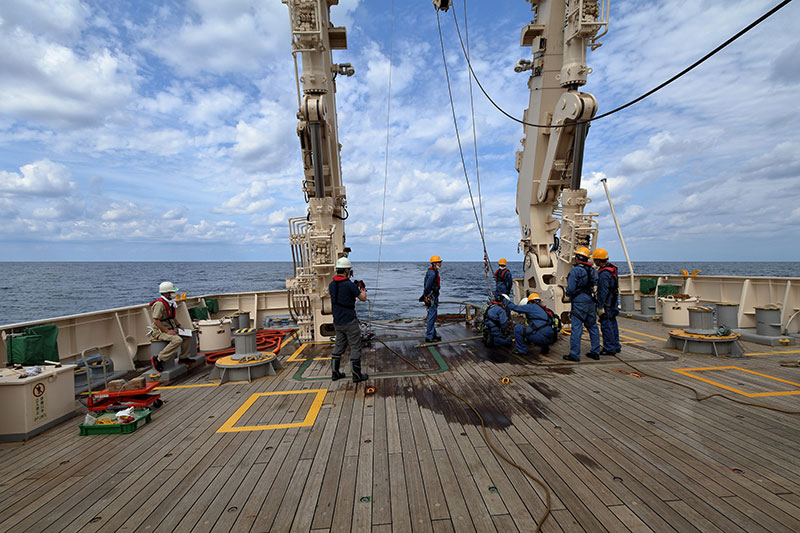 The objective of this cruise was to recover a transect of piston cores accross the Okinawa Trough in order to reconstruct past changes in the bottom water temperature gradient. The angle of the gradient reflects the strength of the Kuroshio Western Boundary Current, which flows through the trough. We also sampled sea water to better understand modern circulation.
The objective of this cruise was to recover a transect of piston cores accross the Okinawa Trough in order to reconstruct past changes in the bottom water temperature gradient. The angle of the gradient reflects the strength of the Kuroshio Western Boundary Current, which flows through the trough. We also sampled sea water to better understand modern circulation.
Cruise SO256 (R/V Sonne) Auckland, New Zealand to Darwin, Australia (April – May, 2017)
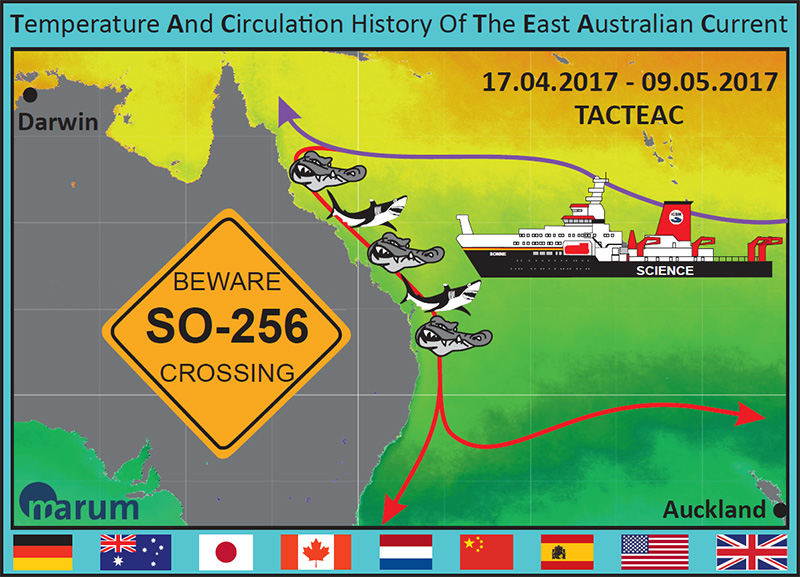 During this cruise, we returned to the location of ODP Site 1198 and recovered a ~9-meter long gravity core (GeoB22218-1) to extend the Site 1198 record to the present. Sediments from Site 1198 are the primary material supporting our research into the origin of the Great Barrier Reef. We are using a variety of methods to understand the timing and reasons for the formation of the reef, including stable isotope analyses, trace element concentrations, X-Ray diffraction, etc.
During this cruise, we returned to the location of ODP Site 1198 and recovered a ~9-meter long gravity core (GeoB22218-1) to extend the Site 1198 record to the present. Sediments from Site 1198 are the primary material supporting our research into the origin of the Great Barrier Reef. We are using a variety of methods to understand the timing and reasons for the formation of the reef, including stable isotope analyses, trace element concentrations, X-Ray diffraction, etc.
Fuji Five Lakes coring campaign, QuakeRecNankai, Yamanashi Prefecture, (November, 2015)
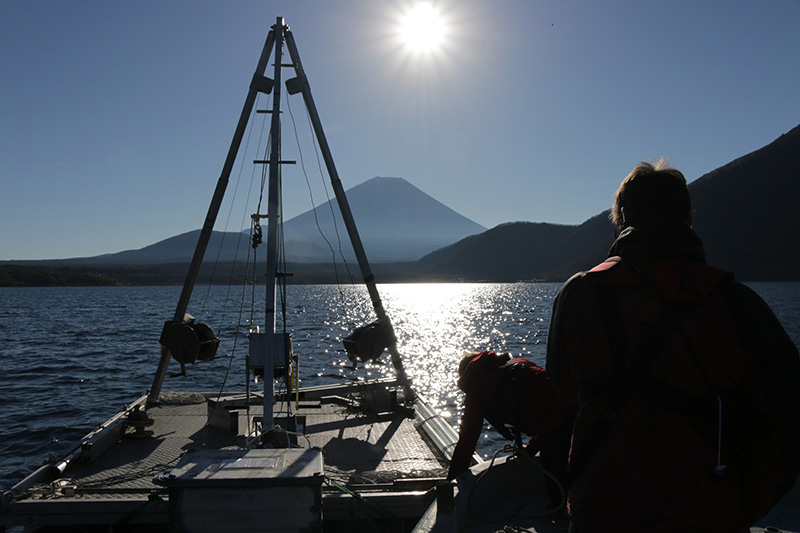 Through funding from the Belgian Federal Science Policy Office (BELSPO), we collaborated with the University of Ghent and the University of Liege, both in Belgium, the University of Tokyo and the Japanese National Institute of Advanced Industrial Science and Technology (AIST) to recover a number of sediment cores from the Lake Kawaguchi, Lake Sai, and Lake Motosu of the Fuji Five Lakes. We also have been performing periodic water sampling of Lake Motosu for understanding its hydrography and connection to the surrounding lakes. Using material from Lake Motosu, we reconstructed the recent eruption history of Mt. Fuji.
Through funding from the Belgian Federal Science Policy Office (BELSPO), we collaborated with the University of Ghent and the University of Liege, both in Belgium, the University of Tokyo and the Japanese National Institute of Advanced Industrial Science and Technology (AIST) to recover a number of sediment cores from the Lake Kawaguchi, Lake Sai, and Lake Motosu of the Fuji Five Lakes. We also have been performing periodic water sampling of Lake Motosu for understanding its hydrography and connection to the surrounding lakes. Using material from Lake Motosu, we reconstructed the recent eruption history of Mt. Fuji.
Lake Hamana Seismic survey, QuakeRecNankai, Shizuoka Prefecture, (October, 2014)
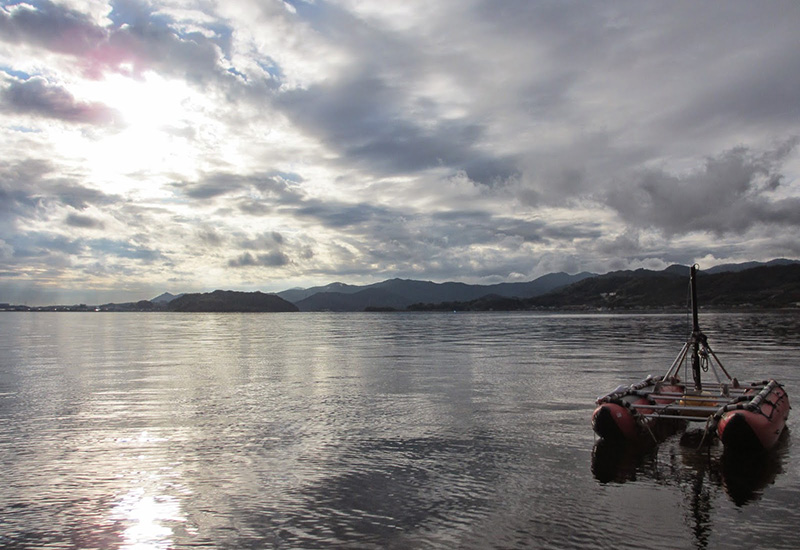 As part of the same BELSPO research as the Fuji Five Lakes project, we also performed a coring campaign at Lake Hamana. Prior to the coring at both the Fuji Five Lakes and Hamana, we performed an extensive seismic survey at each lake to identify potential coring sites. In particular, at Lake Hamana, we were interested in understanding the geometry of the packages of sediment in an effort to identify tsunami deposits caused by the Nankai Trough earthquakes.
As part of the same BELSPO research as the Fuji Five Lakes project, we also performed a coring campaign at Lake Hamana. Prior to the coring at both the Fuji Five Lakes and Hamana, we performed an extensive seismic survey at each lake to identify potential coring sites. In particular, at Lake Hamana, we were interested in understanding the geometry of the packages of sediment in an effort to identify tsunami deposits caused by the Nankai Trough earthquakes.
IODP Exp. 347, (Greatship Maninsha) Baltic Sea Paleoenvironment (2013, 2014)
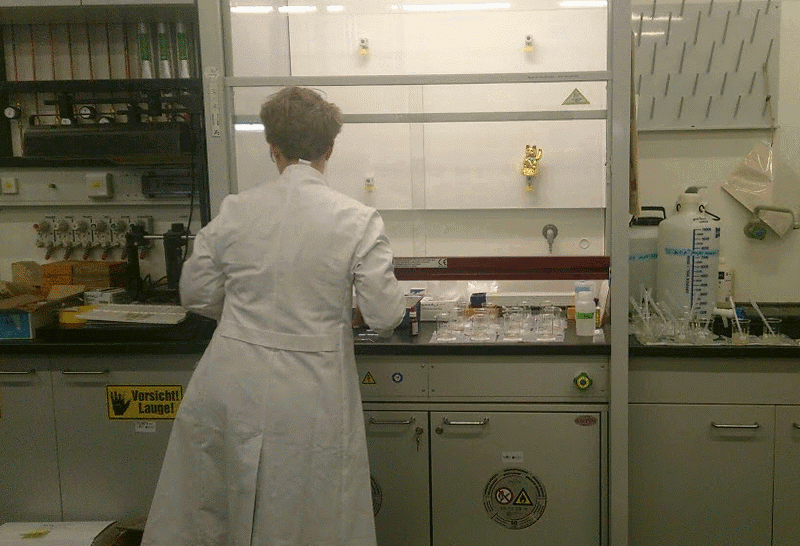 Because of the shallow depths in the Baltic Sea, this expedition was performed on a mission specific platform, which lacks the typical laboratories for analyzing recovered sediment cores. After the cruise in 2014, the expedition scientists all gathered in Bremen, Germany for a month of dedicated analyses of the cores.
Because of the shallow depths in the Baltic Sea, this expedition was performed on a mission specific platform, which lacks the typical laboratories for analyzing recovered sediment cores. After the cruise in 2014, the expedition scientists all gathered in Bremen, Germany for a month of dedicated analyses of the cores.
Lake Ichinomegata drilling, Oga, Akita Prefecture (May, 2013)
 Lake Ichinomegata is a maar on the Oga Peninsula that we drilled to recover an annually-laminated (varved) sequence. The type and color of sediment produced in the lake changes with the seasons, producing fine, recognizable layers. Counting the layers can produce a very precise chronology.
Lake Ichinomegata is a maar on the Oga Peninsula that we drilled to recover an annually-laminated (varved) sequence. The type and color of sediment produced in the lake changes with the seasons, producing fine, recognizable layers. Counting the layers can produce a very precise chronology.
Cruise KH11-1 (R/V Hakuho Maru), Fremantle Australia to Shimizu Japan (January - February, 2011)
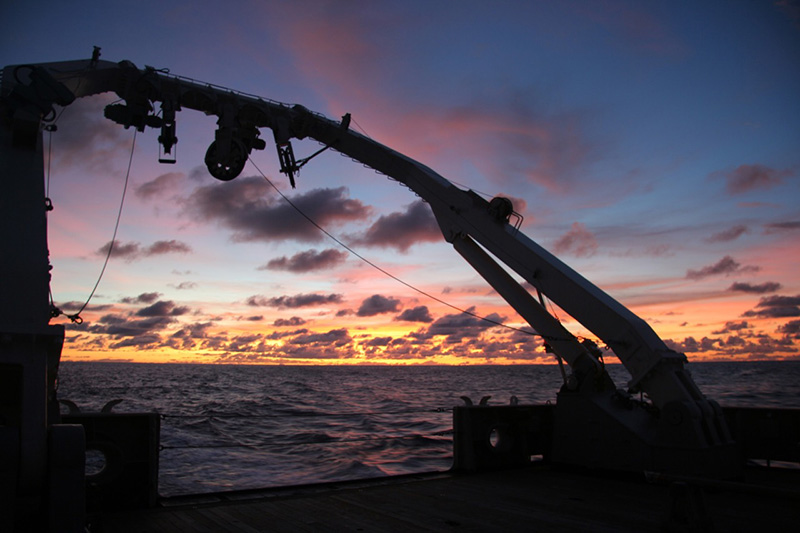 The Bonaparte Gulf in northwestern Australia is a gently sloping bay from which we took a depth-transect of gravity and piston cores in order to track the evolution of the paleo-shoreline, and hence sea-level change, during the last glaciation and deglaciation. This location is far removed from large continental glaciers, so it is relatively free of the isostatic effects the glaciers exhibit on the surface of the earth. The resulting material clarified the age and duration of the last glacial maximum.
The Bonaparte Gulf in northwestern Australia is a gently sloping bay from which we took a depth-transect of gravity and piston cores in order to track the evolution of the paleo-shoreline, and hence sea-level change, during the last glaciation and deglaciation. This location is far removed from large continental glaciers, so it is relatively free of the isostatic effects the glaciers exhibit on the surface of the earth. The resulting material clarified the age and duration of the last glacial maximum.
IODP Exp. 303, (JOIDES Resolution) North Atlantic Paleoceanography, Newfoundland Canada to Ponta Delgada, Portugal (Azores)
 A total of four faculty members of the Earth Resource Science Course participated in this expedition. The material recovered has proven invaluable for our understanding of the evolution of Pleistocene climate. There have been a number of student theses completed from this expedition, and research continues today.
A total of four faculty members of the Earth Resource Science Course participated in this expedition. The material recovered has proven invaluable for our understanding of the evolution of Pleistocene climate. There have been a number of student theses completed from this expedition, and research continues today.
